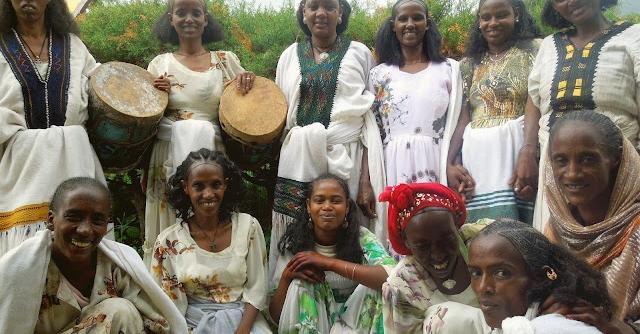Are you curious to know what is habesha? You have come to the right place as I am going to tell you everything about habesha in a very simple explanation. Without further discussion let’s begin to know what is habesha?
The term “Habesha” holds a significant place within the cultural tapestry of East Africa, specifically in countries like Ethiopia and Eritrea. Beyond being a mere label, “Habesha” represents a deep-rooted identity, cultural heritage, and a sense of belonging that has transcended generations. In this blog post, we’ll delve into the origins, cultural significance, and characteristics of the Habesha identity, shedding light on the diverse and vibrant communities it encompasses.
What Is Habesha?
The term “Habesha” traces its origins to the ancient Aksumite Empire, which flourished in the region of modern-day Ethiopia and Eritrea. The Aksumites referred to their kingdom as “Habesha,” and over time, the term came to represent the people of this region. The origins of the name are intertwined with history, identity, and culture, evoking a deep sense of pride and heritage among those who identify as Habesha.
Cultural Diversity And Unity
The Habesha identity encompasses a diverse range of ethnic groups and cultures, primarily centered in Ethiopia and Eritrea. While there is significant diversity within the communities, there are also commonalities that unite the Habesha people. These include shared traditions, languages, religions, and historical narratives that contribute to a sense of unity and belonging.
Key Characteristics Of The Habesha Identity
- Languages: Amharic and Tigrinya are two of the primary languages spoken by Habesha communities. These languages hold cultural significance and serve as a means of communication and cultural preservation.
- Orthodox Christianity: The majority of Habesha people adhere to the Ethiopian Orthodox Tewahedo Church, which has played a pivotal role in shaping cultural practices, religious observances, and art.
- Cuisine: Habesha cuisine is celebrated for its unique flavors and traditional dishes. Injera, a sourdough flatbread, is a staple in Habesha meals, often accompanied by a variety of stews and vegetables.
- Cultural Festivals: Habesha communities celebrate a range of cultural festivals that highlight their traditions, history, and religious observances. Timket, Meskel, and Enkutatash are some of the notable celebrations.
- Art and Craftsmanship: Habesha art is characterized by intricate patterns, vibrant colors, and a blend of religious and cultural symbolism. Traditional clothing, such as the shemma, showcases the craftsmanship and creativity of Habesha artisans.
Celebrating Diversity
While the term “Habesha” unites various communities under a shared identity, it’s important to recognize and respect the individuality of each ethnic group within this umbrella term. Each group contributes its unique traditions, dialects, and customs to the rich cultural mosaic that is the Habesha identity.
Modern Relevance
In the modern era, the Habesha identity continues to thrive both in its countries of origin and among diaspora communities around the world. Cultural events, language preservation efforts, and the use of social media platforms have played a significant role in maintaining and celebrating this vibrant heritage.
Conclusion
The Habesha identity is a testament to the resilience of cultural heritage and the power of shared history. While rooted in ancient origins, it remains a relevant and cherished part of the lives of those who identify as Habesha. As we explore the intricacies of this identity, we come to appreciate the diversity, unity, and enduring legacy that define the rich cultural tapestry of the Habesha people.
If you find out some similar topics then visit here to https://seefounder.com/.
FAQ
What Does Habesha Mean?
Historically, the term “Habesha” represented northern Ethiopian Highlands Semitic speaking Orthodox Christians, while the Cushitic-speaking peoples such as Oromo and Agaw, as well as Semitic-speaking Muslims/Ethiopian Jews, were considered the periphery.
Why Is It Called Habesha?
Habesh in Arabic refers to the highland plateau on the east of the Nile River, which is considered to be the source of all its water. The people inhabiting this area were called Habshi in Arabic, as well. The word Habesha, most likely evolved from the Ge’ez word “ḤBŚ” which was in turn vocalized into “Ḥabaśā”.
Which Country Is Called Habesha?
Ethiopia was also historically called Abyssinia, derived from the Arabic form of the Ethiosemitic name “ḤBŚT,” modern Habesha. In some countries, Ethiopia is still called by names cognate with “Abyssinia,” e.g. Turkish Habesistan and Arabic Al Habesh, meaning land of the Habesha people.
What Is Habesha Called Now?
Al-Habash (Arabic: الحبشة, romanized: al-habāsha) was an ancient region in the Horn of Africa situated in the northern highlands of modern-day Ethiopia and Eritrea. Al-Habash. الحبشة (Arabic) Historical region.
I Have Covered All The Following Queries And Topics In The Above Article
What Is Habesha
What Is A Habesha
What Is A Habesha Person
What Is Habesha Culture
What Is Habesha Means
What Is Habesha People
What Is Habesha Mean
What Is Habesha Kenis
What Is Habesha Mentality
What Is The Meaning Of Habesha
What Is The Meaning Of The Word Habesha?
What Is The Meaning Of The Word Habesha
What Is Habesha Menaltiy
What Is Habesha Meaning In Greek
What Is The Difference Between Oromo And Habesha.
What Is Habesha Food
What Is A Habesha Girl
What Is The Habesha Project
What Is A Habesha Wedding
What Percentage Of Ethiopia Is Habesha
What Is The Difference Between Oromos And Habesha.
What Is Habesha
What does being Habesha mean
